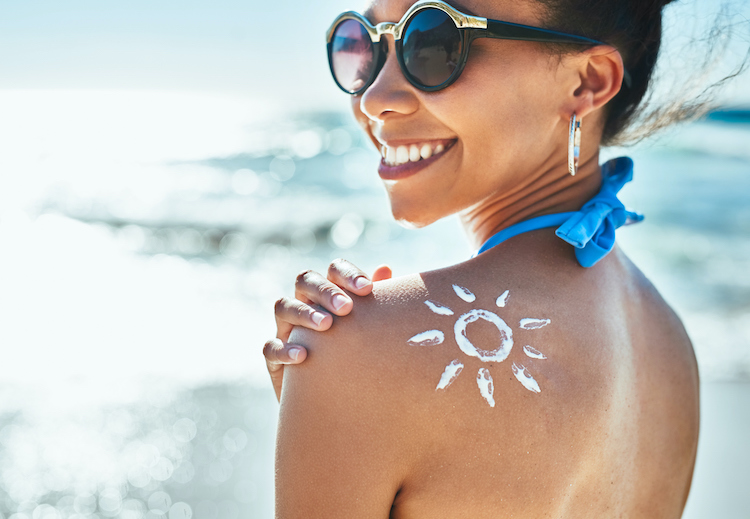
Summer Safety Series: Skincare
Ways you can keep your skin safe beyond sunscreen
 Getty Images
Getty Images
VCU Health’s summer safety series provides Q&A’s with our experts on various topics.
One of the biggest parts of summer, whether at the pool, beach or in your own backyard, is outside in the sun. VCU Health sat down with Jade Kindley, M.D., on how you can keep your skin safe.
How important is sunscreen?
Using sunscreen is extremely important. If you plan to be outdoors for more than 15 minutes, you should apply sunscreen with an SPF of at least 30. I also recommend daily use of sunscreen in the morning for places such as the backs of the hands and the face as these areas can get quite a bit of sun exposure even just driving the car or through windows in an office setting. You can even get UV exposure on cloudy days too.
When should people apply and reapply sunscreen?
You should apply sunscreen 15 minutes before going outdoors and then every two hours when in the sun. If you're in the water a lot, you may even need to reapply every hour to really maintain your sunscreen's effectiveness. It's also important to remember that sunscreen is not catching 100% of those UVA/UVB rays and that's why sun-protective clothing is important.
What can I wear to help protect me from the sun?
You should wear long-sleeve SPF shirts (they do work!) and a wide-brimmed hat (2-3 inches ideally) when outdoors for prolonged periods to really protect yourself from the sun. For SPF shirts, color doesn't matter, but if you're just using a regular long-sleeve shirt for sun protection, you should go with a darker color as it will deflect more of those harmful UVA/UVB rays.
What are the types of sunscreens people should be using in different situations?
There are chemical and mineral sunscreens available and both work well. Mineral sunscreens, which contain titanium dioxide and zinc oxide, don't cause damage to coral reefs, so these have become preferred in some more tropical settings. But in general, I tell my patients to find a sunscreen they're willing to use consistently and just use it every two hours as recommended.
How do you treat sunburn? How do you know if it’s more than just a sunburn?
Sunburn can be treated with cool compresses or cool showers and aloe vera along with ibuprofen and acetaminophen for any pain.
If you have fever, weakness, blistering, nausea, vomiting or feel lightheaded, you may have sun poisoning and need to ensure you drink plenty of extra fluids along with the cool compresses and ibuprofen and acetaminophen and seek health care if there is more severe blistering or uncontrollable nausea or vomiting preventing you from taking in plenty of fluids.
Is it safe to use tanning oil? How do I tan safely?
The short answer is no, it is not safe to use tanning oil. Any tan is really not safe. A lot of people think that if they tan slowly and gradually without burning that it’s not dangerous. But that's not true. Research shows that this type of chronic, prolonged sun exposure actually is what can lead to increased risk of skin cancer and it also increases the risk of melanoma.
What is melanoma, and when should I get a mole checked out?
Melanoma is a type of skin cancer that comes from the pigment-making cells in the skin, called melanocytes. This is one of the more aggressive types of skin cancers and can spread throughout the body if it is not found early and treated. People with a history of sunburn, but also people who have tanned a lot, both outside or in a tanning bed, have increased risk of this type of skin cancer.
These moles typically show what we call the ABCDE's of melanoma. The ABCDE's stand for: Asymmetry meaning the mole doesn't look the same on one side as the other. Border irregularity. Color asymmetry (multiple color browns or blacks or even sometimes a blue-gray color). Diameter that is bigger than 6mm, which is about the size of a pencil eraser. Evolving, where the mole may change shape over time.
How do you keep your skin healthy year-round?
You should check your skin once a month just to become familiar with where moles are located and if they are changing. As you get older, you may notice dry, scaly brown growths that start to appear and many people will be concerned about these. It's always safest to be evaluated by a dermatologist. They can educate you more closely on your body and how to tell these growths from true moles that might have potential for melanoma.



